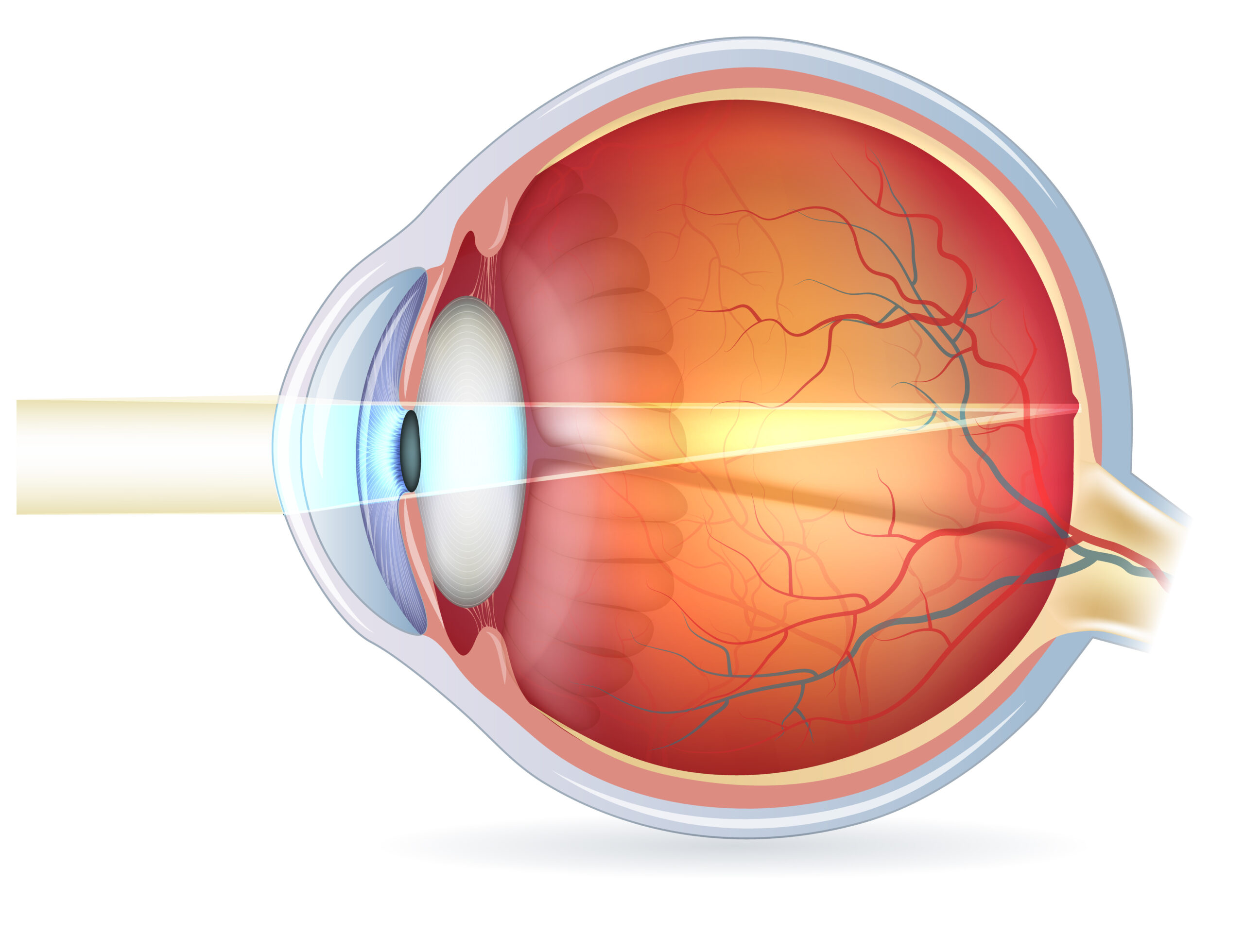Employee, Eye Care Providers, Uncategorized
How Do Our Eyes Work?
How do our eyes work?
When we open our eyes, the images we see are a combination of light reflected from objects all around us. The light enters through the cornea, which serves similarly to a window in the front of our eyes. But our eyes also have curtains for these windows known as the pupils. The pupils control how much light enters the eye. The iris also surrounds the pupil, the colored part we have in our eyes.
The front of our eye is curved, which means the light that enters our eyes is bent, and the images are actually upside down when they reach the retina. But our brain turns the image the right way for us to see correctly.
The retina’s job is to turn the light we see into signals that the brain can understand. A complex way of making the images we see reality. In the very back of the retina, it is more light-sensitive. This part is full of photosensitive cells known as rods and cones and is as big as a 10p coin.
Cones and rods serve different purposes. Cones handle the daylight vision, and rods run the night vision. There are three different types of cones, red, green, and blue. Each kind responds to a different wavelength of light, and they are all responsible for helping us see in color and more detail. Rods, on the other hand, are not sensitive to color but still sensitive to light. In the dark, the cones do not function.
How We See A Image
As we mentioned earlier, when light enters the eye, it goes through the cornea. But before it hits the cornea, it has to go through the lens. The lens is the clear outside of our eyes that is a disc-like structure. When light comes through the lens, it helps focus it on the retina. The lens uses the ciliary muscle to adjust, shape, and help us focus on objects near and far to us. When the ciliary muscle focuses the lens, it is a reflex not controlled by the brain. When the image focuses on the sensitive part of the retina, it creates an electrical signal from the energy in the light that makes up that image. Then nerve impulses carry the image information to the brain using the optic nerve. From there, our brain translates the images that we see.
Other important parts of the eye that support our vision include the aqueous humor, a liquid chamber that sits behind the cornea, and the vitreous humor, a clear gel located in the space between the lens and the retina. Then there’s the sclera, the white part surrounding our iris that protects everything inside the eye, and the choroid, the layer that lies between the retina and the sclera made of layers of blood vessels that help nourish the back of the eye.
Common eye problems
There are many eye disorders that anyone can face. Some of the more familiar ones are:
- Refractive errors- disorders caused by irregularity in the eye shape make it hard for your eyes to focus on images clearly and cause your vision to become impaired or blurred.
- Myopia (short sight) & hypermetropia (long sight)- caused when the cornea and lens can’t focus on the retina properly. Short sight happens when the eyeball is elongated, or the lens is too thick, causing the image to focus in front of the retina. Long sight is the opposite. The eyeball is too short or the lens too thin, which causes the image to focus behind the retina. These conditions are also known as near and farsightedness.
- Cataracts- when the lens in your eye becomes progressively opaque and results in blurred vision
These eye problems can lead to permanent damage or poor vision if not treated by your eye doctor, so make sure you regularly get check-ups.
No matter what condition your eyes are in, they are vital parts of doing our everyday jobs. Without them, we couldn’t see what we are doing, and therefore, they are something to be protected. At SafeVision, we provide multiple options for your eye safety needs. When you protect your eyes with our safety eyewear, you show them the attention they deserve and actively prevent any damage to them.
Shop our selection of safety eyewear online or talk with one of our experienced consultants when you email safevision@hoya.com

